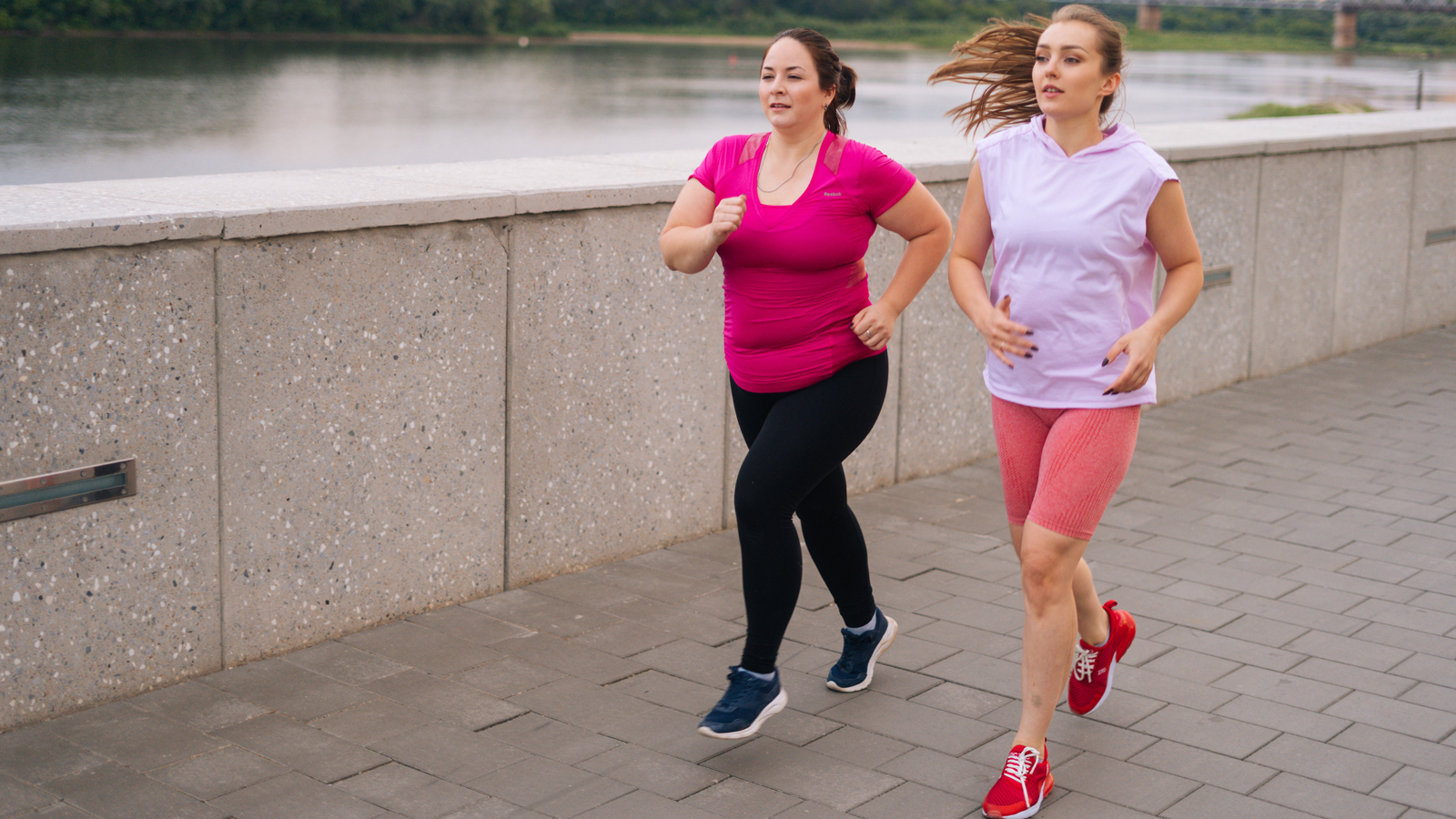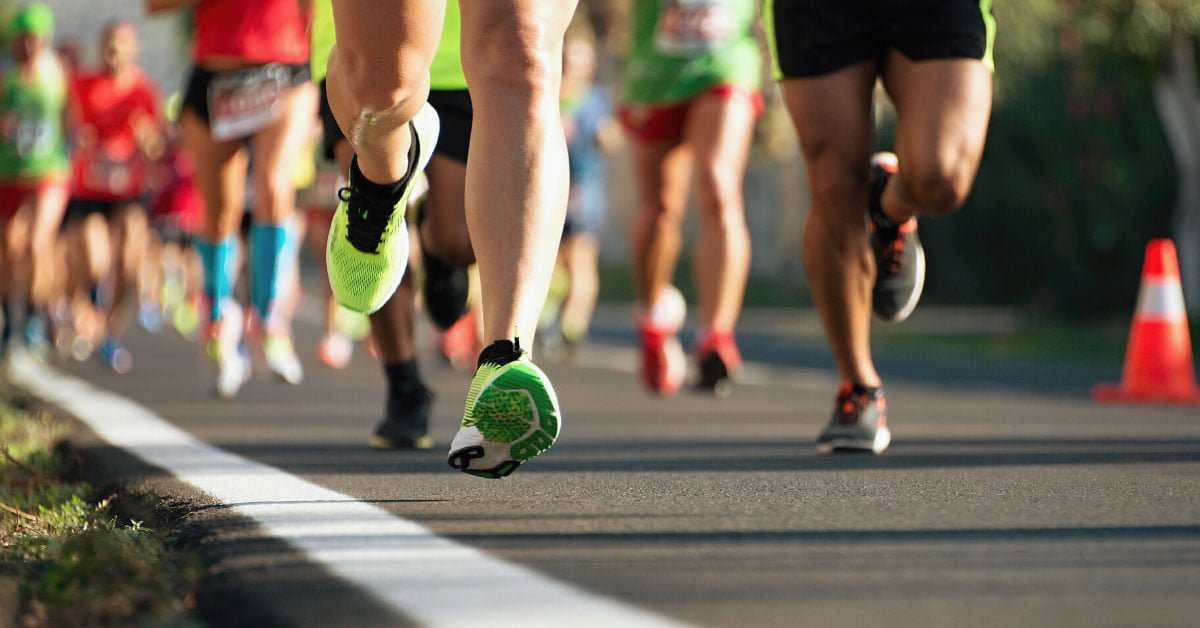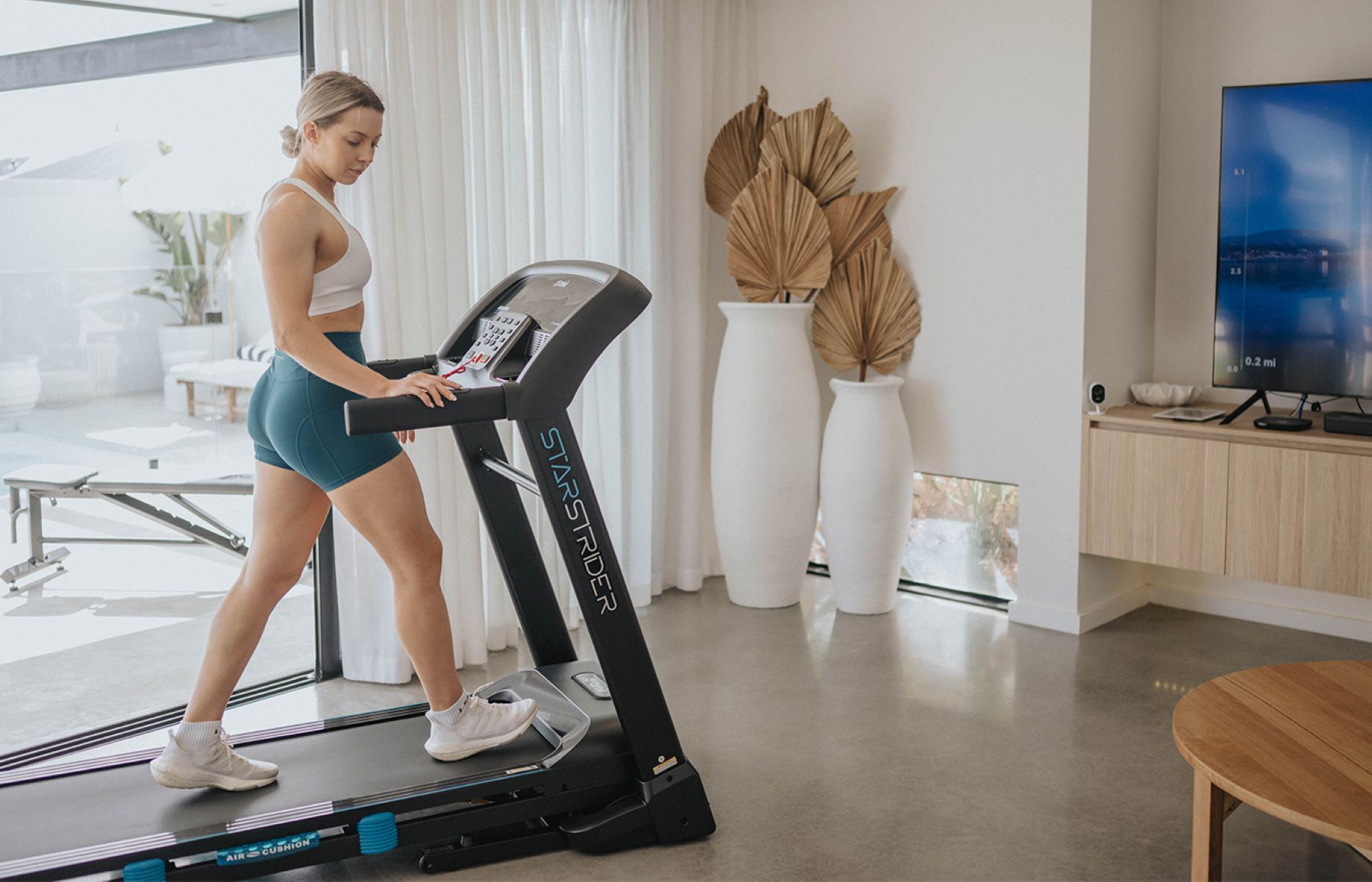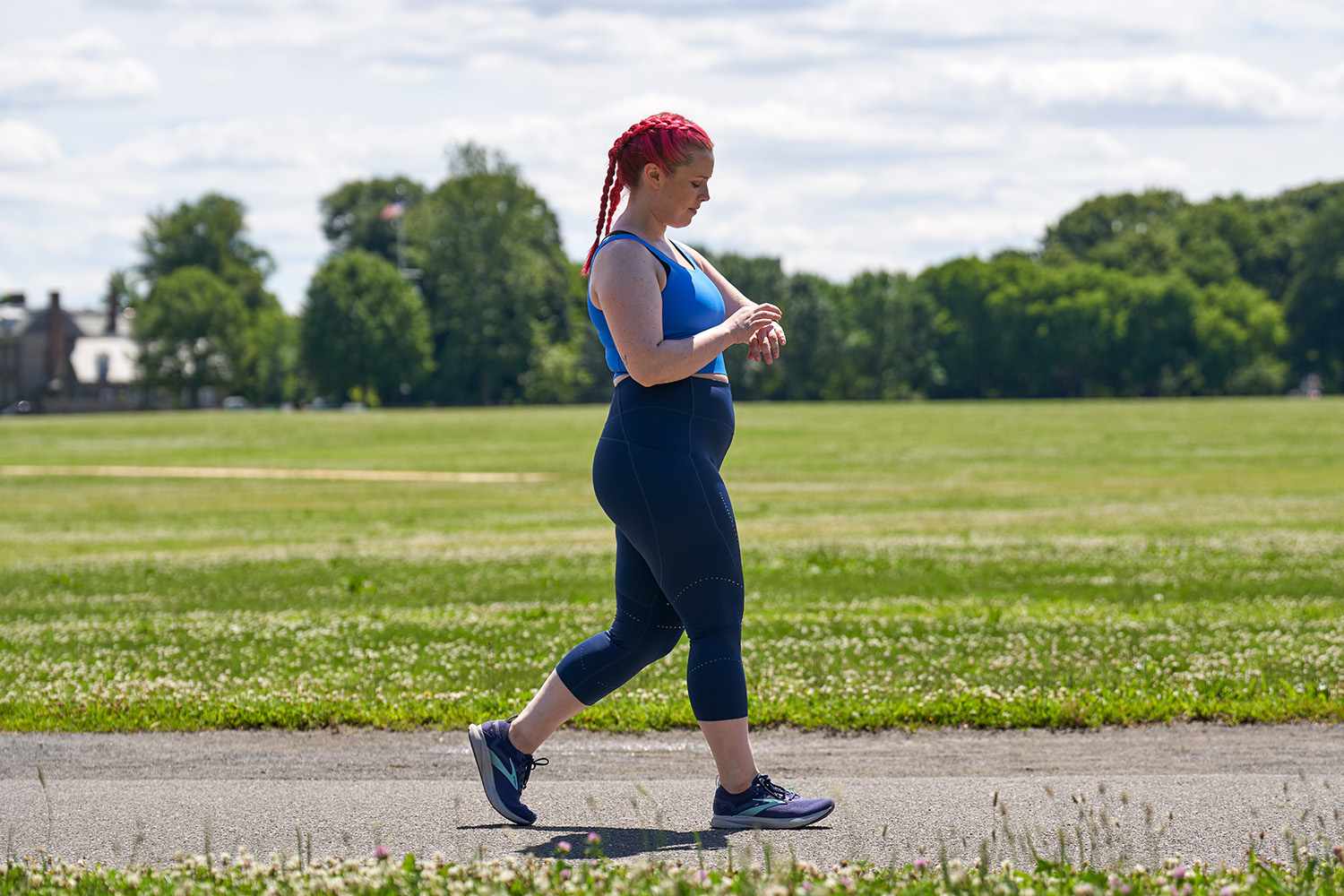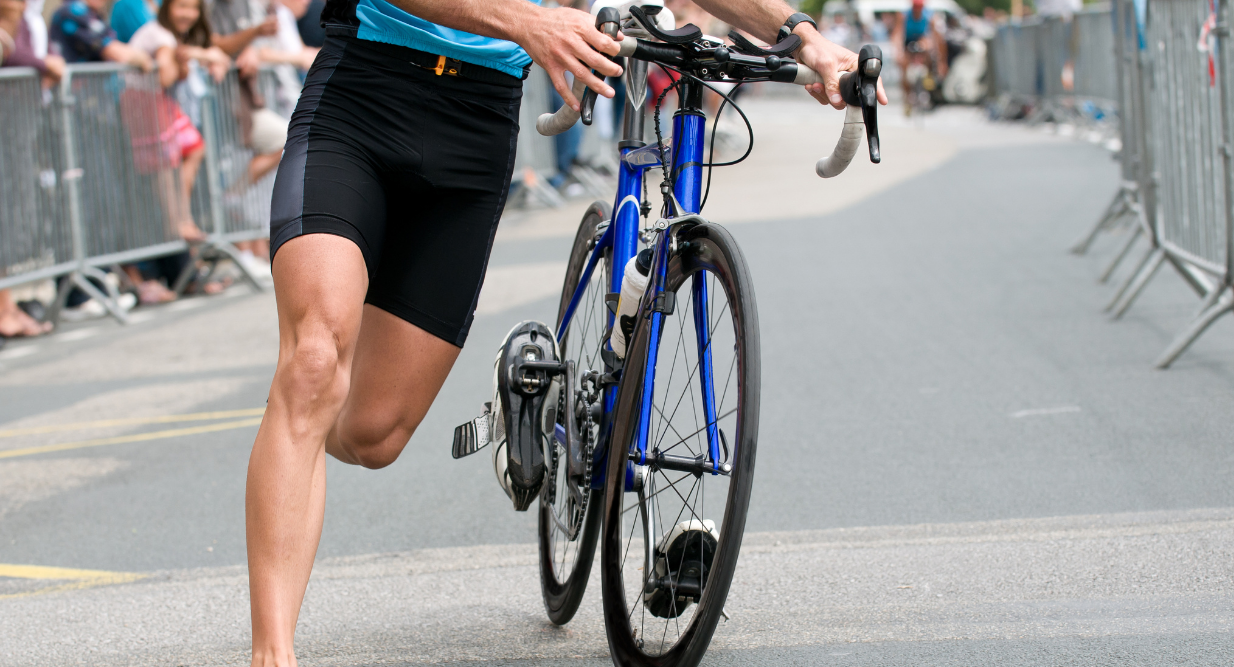

Featured
How To Calculate Pace For Running
Published: October 5, 2023
Learn how to calculate your running pace with this featured guide. Whether you're a beginner or advanced runner, discover the key factors for optimizing your running speed.
Introduction
Running at a specific pace is crucial for any runner, whether you are a beginner or an experienced athlete. Understanding your pace helps you track your progress, set realistic goals, and optimize your training. But what exactly is pace, and how can you calculate it?
Pace is the measurement of how fast you are running per unit of distance, typically measured in minutes per mile or kilometers. It is a fundamental aspect of running performance and can vary greatly depending on factors such as fitness level, terrain, weather conditions, and the distance you are covering. Knowing your pace allows you to measure your effort and adjust your training accordingly.
In this article, we will explore the concept of pace, discuss the factors that can affect it, and provide you with different methods to calculate your running pace accurately.
Whether you are preparing for a race, striving to achieve a new personal best, or simply aiming to improve your overall fitness, understanding how to calculate your pace is essential. So, let’s dive into the details and discover how you can measure your running pace effectively.
Understanding Pace
Pace is a fundamental concept in running that measures how fast you are running over a certain distance. It is typically expressed as the amount of time it takes to cover one mile or one kilometer. Knowing your pace is important for several reasons:
- Measurement of Effort: Pace allows you to gauge the intensity of your running. It helps you understand if you are running at a comfortable pace, pushing yourself too hard, or not exerting enough effort.
- Goal Setting: Having a target pace in mind can help you set realistic goals and work towards achieving them. Whether it’s completing a race in a specific time or improving your overall speed, understanding your pace will assist you in setting attainable objectives.
- Training Optimization: By tracking your pace during different types of workouts, such as long runs, tempo runs, or interval training, you can adjust your training to ensure you are targeting the appropriate pace for each session. This allows for more effective training and better progress.
There are two commonly used units for measuring pace: minutes per mile (min/mi) or minutes per kilometer (min/km). Understanding these measurements and being able to convert between them will be helpful when following pace guidelines or reading about running workouts.
For example, if you are aiming for a pace of 8 minutes per mile, it means that you should complete each mile in 8 minutes or less. Similarly, a pace of 5 minutes per kilometer signifies that you should finish each kilometer in 5 minutes or less.
It’s important to note that pace can vary depending on several factors, including fitness level, terrain, weather conditions, and distance. A long-distance endurance pace will be different from a sprint pace. In the next section, we will delve into the various factors that can influence your running pace.
Factors Affecting Pace
When it comes to running, pace can be influenced by various factors. Understanding these factors is essential for accurately measuring and interpreting your running pace. Here are some key elements that can affect your pace:
- Fitness Level: Your fitness level plays a significant role in determining your running pace. As your endurance and cardiovascular fitness improve, you may be able to sustain a faster pace over a given distance.
- Terrain: The surface you are running on can impact your pace. Running on flat, smooth pavement will generally allow for a faster pace compared to hilly or uneven terrain.
- Weather Conditions: Extreme weather conditions, such as high temperatures, humidity, or strong winds, can negatively impact your pace. It’s important to take these factors into account and adjust your expectations accordingly.
- Incline or Decline: Running uphill or downhill can affect your pace. Uphill sections will likely slow down your pace, while downhill sections may allow for a faster pace.
- Distance: Your pace may vary depending on the distance you are running. It’s common for runners to maintain a slower pace during longer runs compared to shorter, more intense runs.
- Mental and Physical Fatigue: Fatigue can affect your running pace. If you’re mentally or physically tired, maintaining a faster pace might be more challenging.
It’s important to consider these factors when analyzing your running pace. Comparing your performance while taking into account these elements will provide a more accurate understanding of your progress and capabilities.
Keep in mind that pace can also vary within the same run. It’s normal to start slower and gradually increase your pace or maintain a consistent pace throughout. Listening to your body and adjusting your pace accordingly is key to a successful and enjoyable run.
Calculating Pace
Calculating your running pace is essential for monitoring your performance and setting realistic goals. There are several methods you can use to accurately determine your pace. Here are three commonly used methods:
- Method 1: Time and Distance: This method involves measuring the time it takes you to cover a specific distance. For example, if it takes you 30 minutes to run 5 kilometers, your pace would be 6 minutes per kilometer. Similarly, if it takes you 45 minutes to run 6 miles, your pace would be 7.5 minutes per mile. This method is straightforward and can be easily done using a running watch or a smartphone app that tracks your time and distance.
- Method 2: Time and Speed: This method involves calculating your pace based on your running speed. To do this, divide the distance you covered by the time it took you to complete it. For example, if you ran 8 kilometers in 50 minutes, divide 8 by 50 to get a pace of 0.16 kilometers per minute. You can then convert this to minutes per kilometer by taking the reciprocal, which would give you a pace of 6.25 minutes per kilometer. This method is useful if you have the speed data but not the exact distance covered.
- Method 3: Time and Split: This method involves breaking your run into equal splits and calculating the pace for each split. For example, if you run 10 kilometers and divide it into two 5-kilometer splits, you can calculate the pace for each split separately. This allows you to analyze your pace variability and understand if you maintained a consistent pace throughout your run.
Using any of these methods will provide you with an accurate measure of your running pace. You can choose the method that suits your preference and the data available to you. It’s important to consistently monitor your pace and record your results to track your progress over time.
Remember, pace can vary depending on the factors we discussed earlier. Therefore, it’s crucial to consider the context in which you are calculating your pace to obtain a comprehensive picture of your running performance.
Method 1: Time and Distance
One of the most straightforward and commonly used methods to calculate your running pace is by using time and distance. Here’s how you can do it:
- Start by measuring the distance you are planning to run. This can be done using a GPS watch, smartphone app, or a known running route.
- Once you have determined the distance, begin your run and track the time it takes you to complete it. Use a stopwatch, a running watch, or the timer function on your smartphone.
- After finishing your run, divide the time it took you to complete the distance by the distance itself. For example, if you ran 5 kilometers in 30 minutes, divide 30 by 5 to get a pace of 6 minutes per kilometer.
- Alternatively, if you prefer measuring your pace in minutes per mile, you can convert the Kilometers to Miles by multiplying the distance by 0.62. Using our previous example, 5 kilometers would be approximately 3.11 miles. So, if you ran 3.11 miles in 30 minutes, divide 30 by 3.11 to get a pace of around 9.65 minutes per mile.
Tracking your time and distance accurately is crucial for obtaining precise pace calculations. Utilize reliable tools such as GPS watches or smartphone apps with reliable tracking capabilities to ensure accurate measurement of your running distance and time.
Method 1 is simple and accessible, making it an excellent choice for runners of all levels. It allows you to monitor your progress, set realistic goals, and adjust your training based on your pace. Remember to record your pace after each run to track your improvements over time and to compare your results with previous performances.
Keep in mind that pace can vary from run to run due to factors such as terrain, weather conditions, and physical fitness. Understanding these variations will help you interpret your pace calculations accurately and make necessary adjustments to your training regime.
Method 2: Time and Speed
Another method to calculate your running pace is by using time and speed. This method is particularly useful if you have recorded your running speed but not the exact distance covered. Here’s how you can calculate your pace using time and speed:
- Start by recording the time it takes you to complete a run. Use a stopwatch, a running watch, or the timer function on your smartphone to accurately measure your time.
- Next, determine your running speed. This can be measured in various units such as kilometers per hour (km/h) or miles per hour (mph). If you have access to a treadmill or a running app that displays your speed, use that information. Otherwise, you can estimate your speed based on your perceived effort and the distance you cover.
- Once you have your running speed, divide it by the distance you covered during your run. For example, if you ran 8 kilometers in 1 hour, divide 8 by 1 to get a speed of 8 kilometers per hour.
- Finally, to convert your running speed to pace, take the reciprocal of your speed. In the previous example, the reciprocal of 8 kilometers per hour is 0.125 hours per kilometer. Multiply this result by 60 to convert it to minutes per kilometer, which gives you a pace of 7.5 minutes per kilometer.
Using the time and speed method allows you to calculate your running pace even if you don’t have the exact distance measurements. It provides an alternative approach to tracking your pace and monitoring your progress.
Remember, this method relies on accurately measuring your running speed. Use reliable tools such as GPS watches, running apps, or treadmills to obtain accurate speed readings. Additionally, keep in mind that pace can vary based on terrain, weather conditions, and individual fitness levels, so take these factors into consideration when interpreting your pace calculations.
Method 2 provides flexibility in calculating pace when the distance is not readily available. It is particularly useful for runners who focus on monitoring their running speed rather than the exact distance covered. By consistently tracking your time and speed, you can gain valuable insights into your running performance and make any necessary adjustments to your training regimen.
Method 3: Time and Split
Splitting your run into equal segments and calculating the pace for each segment is another valuable method to measure your running pace. This method, known as time and split, allows you to analyze your pace variability and determine if you maintained a consistent pace throughout your run. Here’s how you can use this method:
- Start by dividing your run into equal segments. For example, if you’re running 10 kilometers, you can divide it into two 5-kilometer splits or five 2-kilometer splits.
- During your run, record the time it takes you to complete each split. Use a stopwatch, a running watch, or the timer function on your smartphone to accurately measure the time for each segment.
- Next, calculate the pace for each split by dividing the time it took to complete the split by the distance covered in that split. For example, if it took you 25 minutes to run 5 kilometers in the first split, your pace for that segment would be 5 minutes per kilometer.
- Repeat the calculation for all the other splits to get the pace for each segment of your run.
By using the time and split method, you can analyze the variability of your pace throughout your run. You may find that you started at a slower pace and gradually increased or maintained a consistent speed. This information is valuable in understanding your pacing strategy and making any necessary adjustments to improve your overall performance.
Keep in mind that pace can vary within the same run due to factors such as fatigue, terrain, or weather conditions. It’s essential to interpret your pace calculations in the context of these factors to gain a comprehensive understanding of your running performance.
Method 3 provides a valuable insight into the pace consistency of your runs. By paying attention to your splits and analyzing your pace variability, you can make informed decisions about your training strategies and improve your overall running performance.
Tips for Improving Pace
Improving your running pace requires consistent training and focus. Here are some tips to help you enhance your pace and become a faster runner:
- Incorporate Interval Training: Interval training involves alternating between periods of high-intensity and lower-intensity efforts. Adding intervals to your training plan can improve your speed and overall running performance.
- Include Tempo Runs: Tempo runs are characterized by running at a “comfortably hard” pace for a sustained period. These runs help improve your lactate threshold, allowing you to sustain a faster pace for longer distances.
- Strengthen Your Legs: Incorporate strength training exercises targeting your leg muscles to improve your running efficiency and power. Squats, lunges, and calf raises are effective exercises for strengthening your lower body.
- Work on Your Running Form: Maintaining proper running form is crucial for running efficiently. Focus on posture, foot strike, and arm swing to optimize your running mechanics and improve your pace.
- Gradually Increase Mileage: Gradually increasing your weekly mileage allows your body to adapt to the demands of running. As your endurance improves, your pace will naturally progress.
- Include Speed Workouts: Incorporate dedicated speed workouts into your training routine, such as hill repeats or track workouts. These workouts help build your running speed, power, and efficiency.
- Ensure Proper Recovery: Give your body enough time to recover between workouts. Adequate rest and recovery are essential for avoiding injuries and allowing your muscles to adapt and grow stronger.
- Stay Consistent: Consistency is key when aiming to improve your running pace. Stick to your training plan, be patient, and trust the process. Gradual improvements will come with time and consistent effort.
- Listen to Your Body: Pay attention to any signs of fatigue or injury. Rest and recover when needed to prevent overtraining and maximize your running performance.
Remember, improving your pace takes time and patience. It’s essential to set realistic goals, celebrate every milestone, and enjoy the journey. By implementing these tips and staying dedicated to your training, you will gradually see improvements in your running pace.
Conclusion
Understanding and calculating your running pace is crucial for monitoring your performance and achieving your running goals. Whether you’re a beginner or an experienced runner, knowing your pace allows you to track your progress, set realistic targets, and optimize your training.
In this article, we explored different methods to calculate your running pace. The time and distance method provides a straightforward way to measure your pace by dividing the time it takes to complete a specific distance. The time and speed method allows you to calculate your pace based on your running speed, even when the exact distance covered is unknown. The time and split method assists in analyzing the variability of your pace throughout a run, providing insights into your pacing strategy.
We also discussed the factors that can affect your pace, such as fitness level, terrain, weather conditions, and distance. Recognizing these variables helps you interpret your pace calculations accurately and make necessary adjustments to your training regime.
Additionally, we provided tips for improving your running pace, including incorporating interval training, tempo runs, strength exercises, and working on your running form. By implementing these strategies and staying consistent in your training, you can gradually enhance your pace and become a faster runner.
Remember, improving your running pace is a continuous journey. Set realistic goals, stay dedicated to your training, listen to your body, and celebrate each milestone along the way. Enjoy the process and embrace the progress you make, knowing that every step forward brings you closer to becoming a stronger and faster runner.

